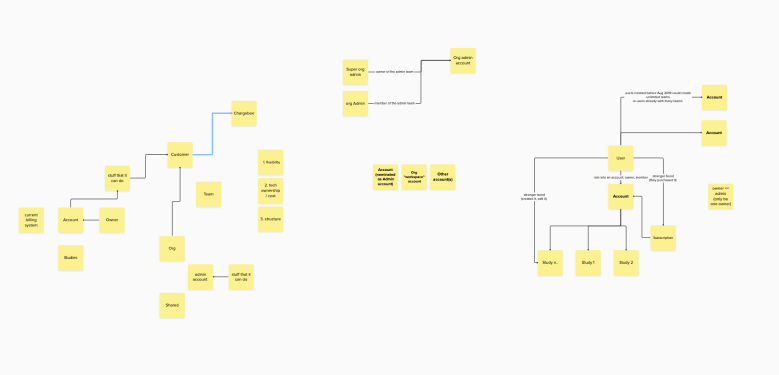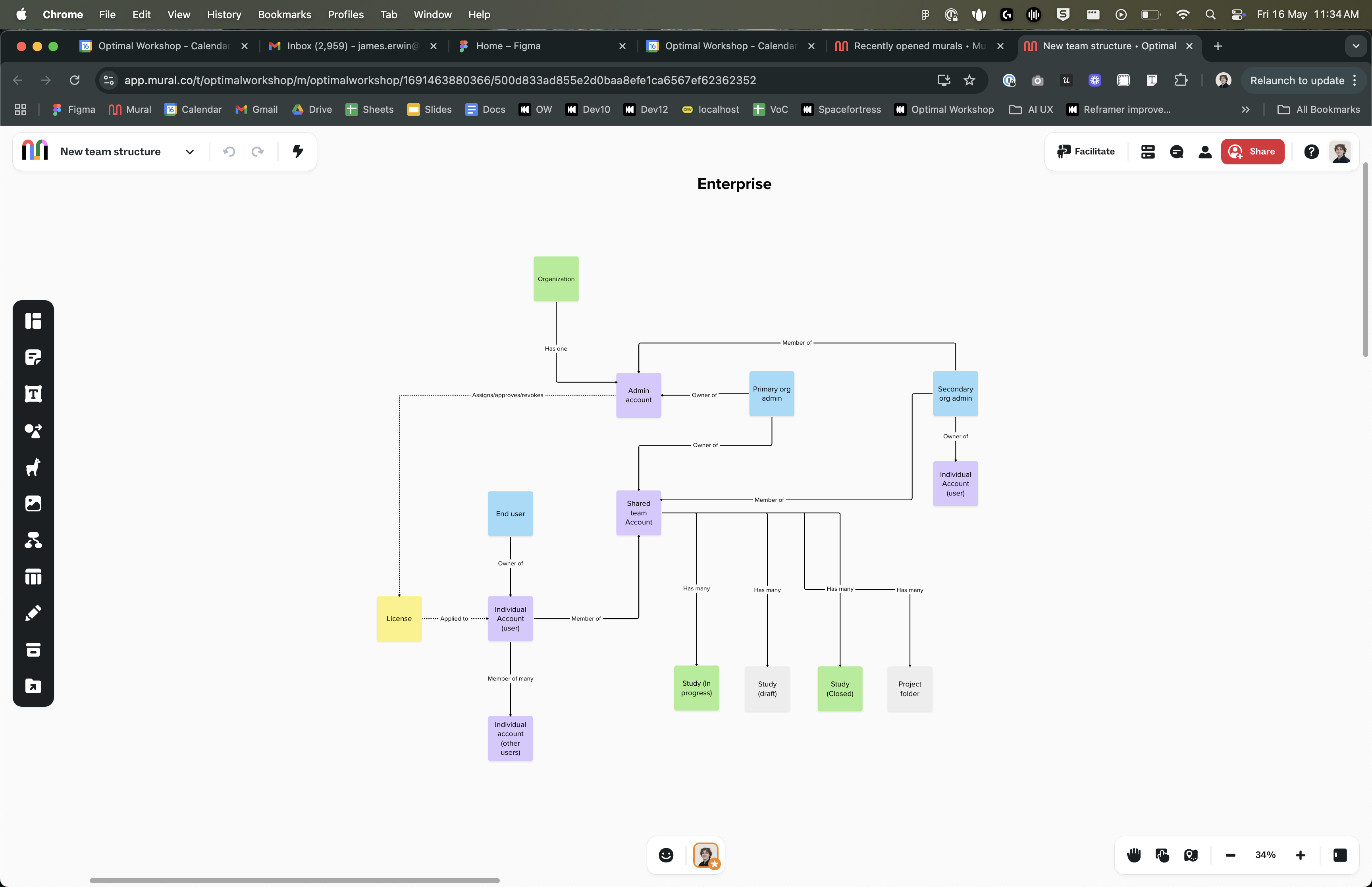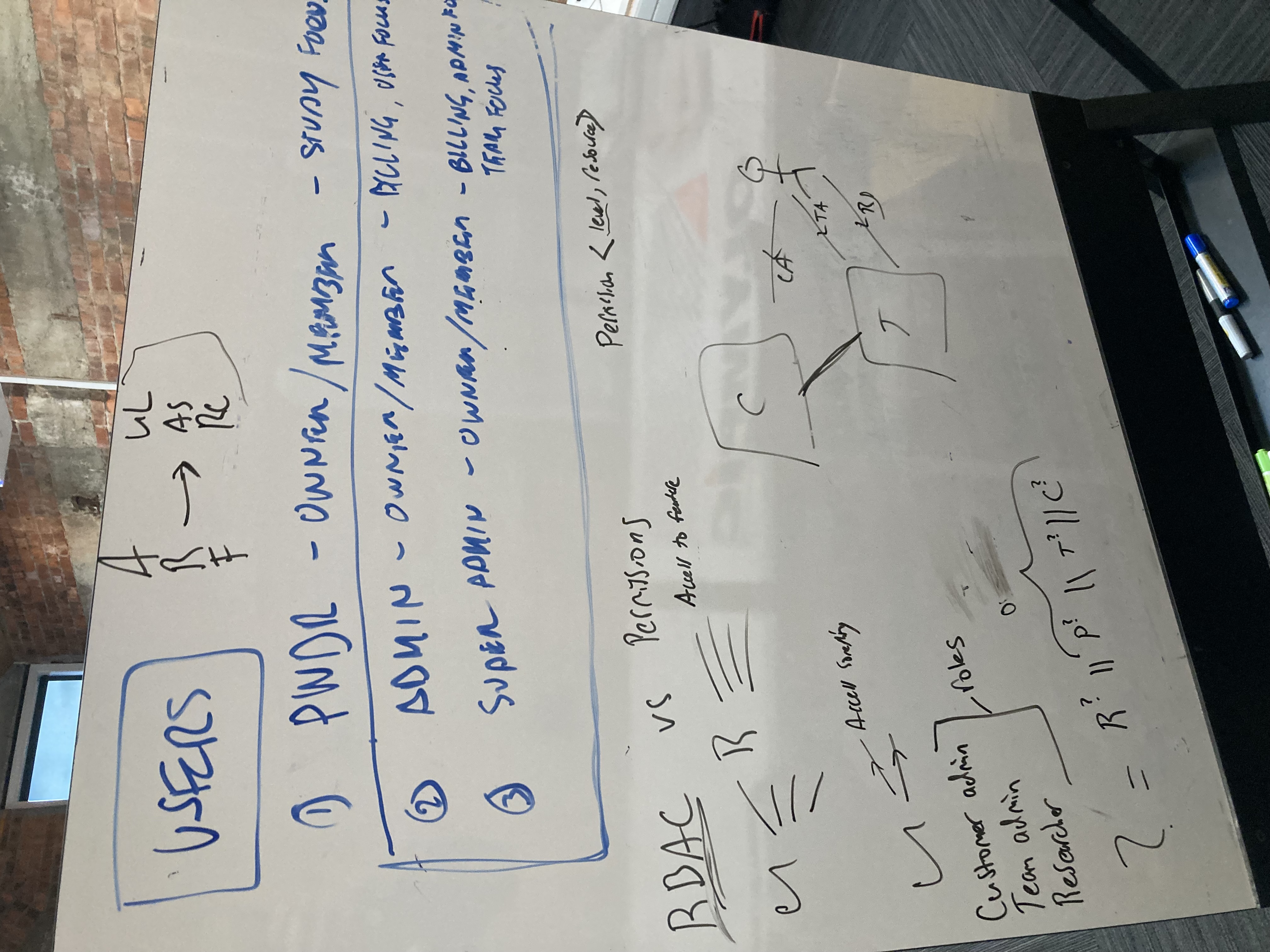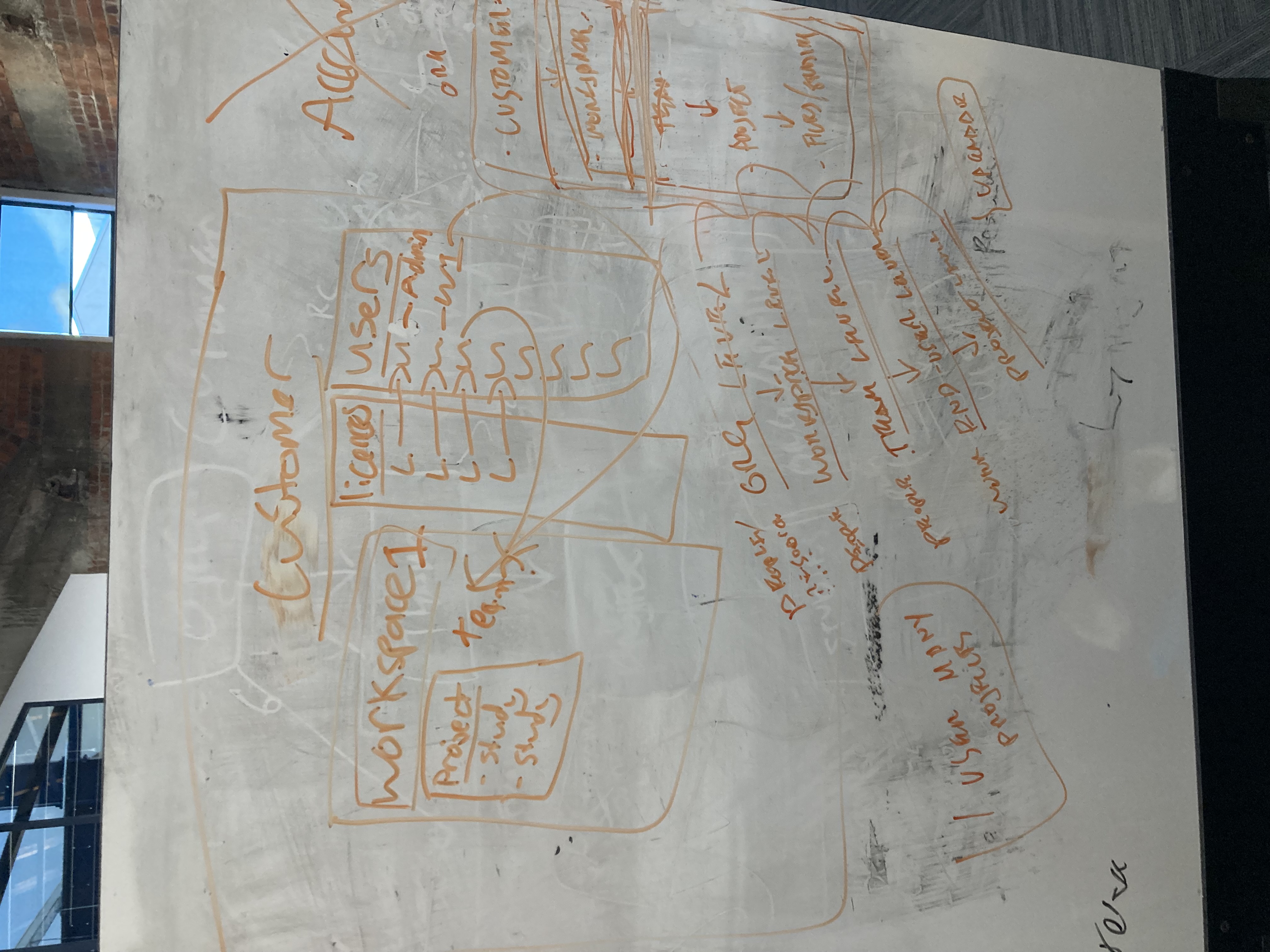Research & Discovery
Sales Intelligence & Customer Voice Analysis
I conducted a comprehensive analysis of our sales performance using multiple research methods. I personally reviewed 90+ sales calls through Gong, conducted interviews with our revenue team, and led customer requirement sessions to understand gaps in our offering.
Through this analysis, I uncovered critical insights that shaped our strategy:
- I discovered that enterprise customers were consistently requesting features that our current architecture simply couldn't support
- My research revealed that banking sector clients and FAANG companies had specific structural requirements we weren't meeting
- I identified a fundamental misalignment between our product positioning and how enterprise buyers actually make decisions
- Working with the revenue team, I documented recurring objections that all centered around our product's lack of flexibility
The pain points I identified were clear: our account structures were too rigid, we were missing enterprise-standard features, and our pricing and packaging didn't match enterprise expectations.
Technical Architecture Assessment
I partnered closely with our Head of Engineering to map out our current product architecture in detail. Together, we identified the specific technical limitations that were preventing us from delivering optimal enterprise experiences, giving me the technical foundation needed to propose viable solutions.
Enterprise Customer Validation
To validate my findings and proposed solutions, I designed and conducted in-depth interviews with enterprise customers from the US banking sector and FAANG companies. I developed structured discussion guides in collaboration with our Product Manager to ensure we captured comprehensive feedback on enterprise requirements and tested the viability of my proposed architectural changes.




.png)
.png)